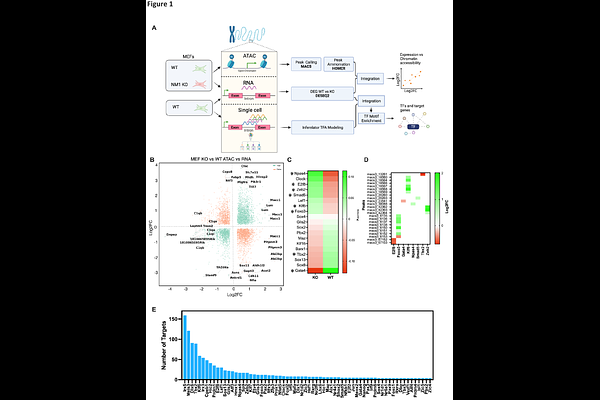Nuclear Myosin 1 links genomic architecture to adipose tissue remodeling, metabolic inflammation and obesity in mice

Nuclear Myosin 1 links genomic architecture to adipose tissue remodeling, metabolic inflammation and obesity in mice
Khalaji, S.; Venit, T.; Lukacova, Z.; Fambri, V.; Shrestha, R.; Kaluarachchi, S.; Boitet, M.; Fagny, M.; Saldi, G.; Percipalle, P.
AbstractDuring adipogenesis, a metabolic shift from oxidative phosphorylation (OXPHOS) to aerobic glycolysis enables preadipocytes to meet the biosynthetic and energetic demands of differentiation. Nuclear myosin 1 (NM1), a chromatin-associated actomyosin motor that regulates transcription and chromatin accessibility, is essential for maintaining OXPHOS. Here, we identify NM1 as a key regulator of adipocyte differentiation and adipose tissue homeostasis. Integration of ATAC-seq and RNA-seq in NM1-deficient mouse embryonic fibroblasts revealed coordinated dysregulation of adipogenic genes (Insig1, Lipg, Fat1) and altered enhancer accessibility near Klf6, Foxo3, Smad5, and Gata4. NM1 knockout mesenchymal stem cells showed impaired adipogenic differentiation despite adipocyte hypertrophy. In vivo, NM1-deficient mice developed age-dependent visceral obesity with transcriptional reprogramming in white adipose tissue (WAT), including downregulation of adipogenesis and mitochondrial pathways, and activation of IFNG-, IL33-, and TNF-driven inflammation. Cross-species analysis revealed overlap with MYO1C-centered regulatory modules in human adipose tissue, implicating NM1/MYO1C in conserved chromatin-based control of adipose biology